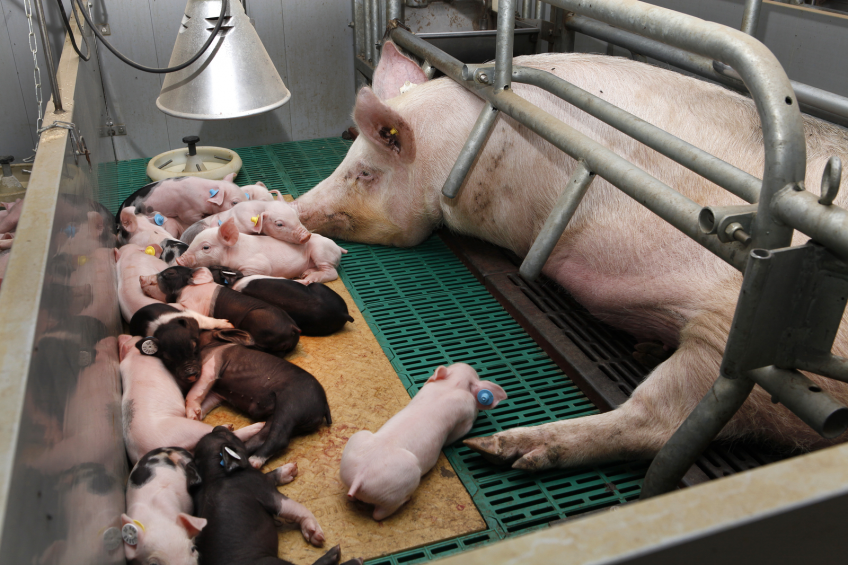Predicting sow output

A combined Japanese-Spanish research has shown that it is possible to forecast high lifetime and reproductive performance of sows on the basis of the number of pigs born alive in parity 1.
The study, published recently in the Journal of Animal Science, was carried out on commercial farms in the south of the European Union (EU) by scientists from the School of Agriculture, Meiji University, Kanagawa, Japan, supported by swine management software company PigChamp.
Research objectives
The scientists’ objectives were twofold:
- to compare reproductive performance across parity and lifetime performance in sow groups categorised by the number of pigs born alive in parity 1;
- and to examine the factors associated with more pigs born alive in parity 1.
The researchers stated they analysed 476,816 parity records and 109,373 lifetime records of sows entered into 125 herds from 2008 to 2010. Sows were categorised into 4 groups based on the 10th, 50th, and 90th percentiles of pigs born alive in parity 1 as follows:
- 7 pigs or fewer;
- 8 to 11 pigs;
- 12 to 14 pigs;
- and 15 pigs or more.
15 or more pigs born alive in parity 1
In their article, the researchers write they applied generalised linear models to the data. “For reproductive performance across parity, sows that had 15 or more pigs born alive in parity 1 had 0.5 to 1.8 more pigs born alive in any subsequent parity than the other 3 pigs born alive groups.
“In addition, they had 2.8 to 5.4% higher farrowing rates in parities 1 through 3 than sows that had 7 or fewer pigs born alive. However, there were no differences between the sow pigs born alive groups for weaning-to-first-mating interval in any parity.”
Lifetime performance
They continued writing, “For lifetime performance, sows that had 15 or more pigs born alive in parity 1 had 4.4 to 26.1 more lifetime pigs born alive than sows that had 14 or fewer pigs born alive. Also, for sows that had 14 or fewer pigs born alive in parity 1, those that were first mated at 229 days old (25th percentile) or earlier had 2.9 to 3.3 more lifetime pigs born alive than those first mated at 278 days old (75th percentile) or later.”
The researchers state in their article that factors associated with fewer pigs born alive in parity 1 were summer mating and lower age of gilts at first mating but not reservice occurrences.
Additionally, they found that there was a two-way interaction between mated month groups and age of gilts at first mating for pigs born alive in parity 1; pigs born alive in parity 1 sows mated from July to December increased non-linearly by 0.3 to 0.4 pigs when the age of gilts at first mating increased from 200 to 310 days old. However, the same rise in age of gilts at first mating had no significant effect on the pigs born alive of sows mated between January and June.
Also read: Benefits of calcidiol for gilt reproduction
High amount of pigs born alive
In conclusion, a high amount of pigs born alive in parity 1 can be used to predict that a sow will have high reproductive performance and lifetime performance. Also, the data indicate that the upper limit of the age of gilts at first mating for mating between July and December should be 278 days old.
The research was carried out by R. Iida, C. Piñeiro, and Y. Koketsu.











